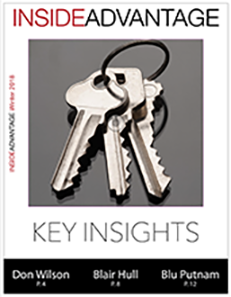June 2015

My interview for a position at Merrill Lynch on the trading floor of the Chicago Mercantile Exchange took place in a smokers’ break room. A hurried Merrill Lynch filling broker with a raspy voice and a mustache somewhat out of date for 1986 asked if I was good with numbers and calm under pressure. Four years of studying finance and it came down to that, could I count and was I prone to panic. In the time it took my interviewer to finish a Marlboro Light, I was hired.
My initial job on the CME trading floor was to run wire orders, sent over a telex machine to waiting clerks on the outskirts of the pits. You needed to be organized, move quickly and get the orders to the correct pit and proper section for execution. A front month order delivered to a back month clerk was floor suicide. The system struck me as chaotic, a little brutal at times but wildly efficient.
I progressed from running wire orders to working in the S&P 500 options pit, relaying price and trade information to voice brokers on the outskirts of the pit. My filling broker, the person actually executing the trades and carrying the risk, had a $1 million out trade during the October 1987 stock market crash. It was the extremely rare positive out trade and reminds me to this day of the extraordinary risks brokers and liquidity providers manage on a daily basis. I left the pit and have been a voice broker on the institutional side ever since.
For nearly 30 years I have witnessed the CME trading floors performing brilliantly through major market-moving events including the 1987 crash, the S&L crisis, the Orange County bankruptcy in 1994, the Russian ruble crisis and resulting Long Term Capital collapse in 1998 and the 2008 financial crisis. There have been non-events like Y2K and tragic events such as the September 11th terrorist attacks. Throughout all of these incidents, the trading floors remained extremely efficient and liquid venues for risk transfer.
The CME recently announced it will be closing its historic futures pits this summer, a move that, while not unexpected, came across as sudden. Cynics have long argued that the CME brass has wanted to close the trading floors since the advent of electronic trading. The fact is the futures pits have been transacting less than 1% of CME volume for several years now. Side–by-side trading, the choice of executing in open outcry futures pits and/or on the electronic platform has existed for some time and CME clients have overwhelmingly chosen the electronic platform for executing futures contracts.
So what is the future of the trading floor? Time will tell, but complex, multi-faceted futures spread transactions and CME options markets still benefit from and find value in the open outcry, auction style of trading. The options markets on the CME floor are some of the most liquid markets in the world. The growth of electronic futures trading and explosion in open interest enhances options markets, allowing ease of access to underlying liquidity for open outcry options market makers seeking a hedge. The CME reported a record 2.84 million options contracts traded per day across all products in March 2015. Eurodollar options accounted for nearly 1 million contracts per day with 83% of those contracts executed in the pit. Total open interest in Eurodollar options is approaching 30 million contracts, amazing especially when one considers the Fed Funds target rate has been at its lower bound, 0% to .25%, since December 2008 and it’s been nearly a decade since the Federal Reserve last tightened credit.
End users demand instant access to liquidity and low transaction costs. Options on single expiration-type futures such as treasury futures have made more of a migration to screen based trading with 50% executed on the screen and 50% still executed on the trading floor. Eurodollar options, however, remain a more difficult beast to tame with 40-plus underlying futures contracts, 26 of which have quarterly and/or serial options expirations. Eurodollar options combinations can also be finely tuned with multiple-strikes and ratios to peg 3-month LIBOR sets potentially going out 24 quarters. Instant access to Green June 2017 1:3 ratio put spreads does not exist without the open outcry platform.
In regards to transaction costs, much of the screen-based liquidity is provided by a few very large market making firms who would like nothing more than to see all options trading migrate to the screen. Options pits on the CME floor, by contrast, remain very well populated with a diverse group of individual locals, local trading groups and large market making firms all aggressively competing for trades. In addition, voice brokers disseminate trade information, color, order flow and trading ideas to end users, further enhancing liquidity. Would transaction costs for price takers increase if options markets consolidated electronically into a few price makers’ hands? Would a market always be adequately supported in the event of a liquidity crisis? Is it worth the risk to find out?
The CME trading floor is more than just a backdrop for CNBC. Price discovery and liquidity transfer remain vibrant in the more difficult to electronically replicate options pits. The evolution of the trading floor, from smokers’ break rooms to a dual-platform, multi-faceted price discovery facility is ongoing. At the end of the day it is our clients, the end users, who will decide the fate of the trading floors. Traders, brokers, market makers and the CME are nothing without our clients.






